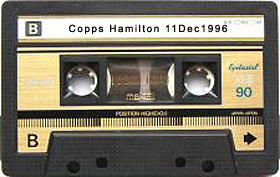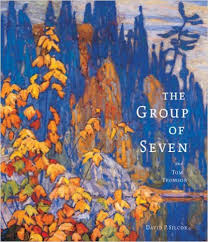 SOUNDTRACK: RHEOSTATICS-Copps Coliseum, Hamilton, ON (December 11 1996).
SOUNDTRACK: RHEOSTATICS-Copps Coliseum, Hamilton, ON (December 11 1996).
 This is the final show on Rheostatics Live in which the band is opening for The Tragically Hip.
This is the final show on Rheostatics Live in which the band is opening for The Tragically Hip.
For this show, the intro music is also from The Wizard of Oz, but this time it’s Judy singing “Somewhere Over the Rainbow.” It’s just one verse before fading out and then guitars fading in for Martin to play “A Mid Winter Night’s Dream.”
Turns out that this setlist is similar to the one from Buffalo with a lot of new songs. Although there are a few older/more popular songs in places.
The new songs include “Fat” which sounds great of course. I gather they are maybe sharing a microphone because at the end Dave says “See you in the next song, Martin.” “Okay, Dave.” This leads into a perfect version of “All the Same Eyes.”
Martin says “We are the Rheostatics.” Dave says “We are the Rheostatics, not to be confused with The Howell Brothers (?). They couldn’t make it but we got their jackets. It’s nice of you to come out early. We’re playing selections from our new record. Get it before it’s reduced to clear.” (You can hear someone laugh on tape).
This is a segue into the single “Bad Time to Be Poor.” It’s followed by another Tim song, “Claire” with the acoustic guitar opening in place. There’s another lengthy guitar solo, although it’s not quiet as exciting as some of the other ones. But Martin was saving up for a spirited version of “California Dreamline.”
They end their set with a rough rocking “Feed Yourself.” During the spoken part, they slow things down to just a bass and washes of guitar. It’s a pretty intense ending and a good preparation for The Tragically Hip.
[READ: June 25, 2017] The Story of Canada in 150 Objects
In celebration of Canada’s 150th year, Canadian Geographic and The Walrus created this special issue–a fun way to describe many elements of Canadian culture through “objects.”
The objects are grouped in vague categories. Some have just a few words written about them while others get a few pages. Some are humorous, some are more serious. Most are happy or amusing, some not so much. And all of it together paints a diverse and complex portrait of the country–as well as teaching this person from South of the border a number of things I did not know.
It’s with comic pride and humility that the first object is politeness (which is not an object at all, of course). The amusing thing about this article about “politeness” is that while the author of it is very pleased to be so polite, he also can’t wait for his fellow Canucks to forget to be polite so he can rub it in with a extra smarmy “You’re Welcome.” (more…)


